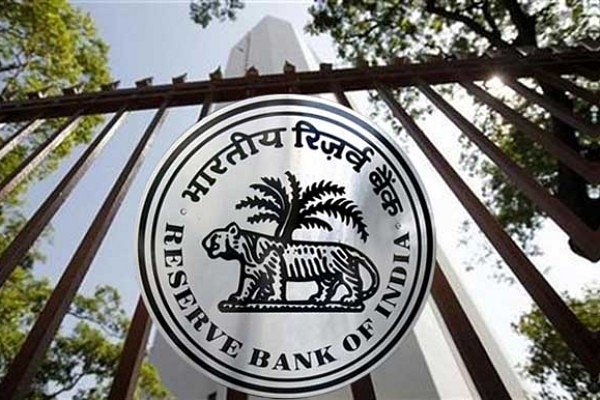Economy
RBI Silence On Rupee In Monetary Policy Suggests Something Big May Be Around The Corner
- It is entirely possible that the RBI and the government are quietly working on some big plans to attract capital flows from NRIs.
- Hence the studied silence on the rupee.

The RBI headquarters in Mumbai. (GettyImages)
The Monetary Policy Committee (MPC) continues to flummox the markets. At a time when oil is on the boil and the rupee has been heading inexorably south this year, it chose to avoid a rate hike last Friday (5 October). Instead, it merely altered its stance on policy from the current “neutral” to “calibrated tightening”. What this implies is that in future rates may go up, but it is not willing to spoil the party right now.
It is not a bad compromise, given the difficulties the economy is facing. But reading between the lines, and given that the monetary policy statement makes only a passing mention or two of the rupee’s fortunes, one can speculate that the central bank and the government are either not unduly worried about the currency’s trajectory, or they have something big planned in the weeks ahead to stem the rot in the rupee. The latter is more likely since a steadily depreciating rupee and rising fuel prices can damage growth.
Also interesting is the voting pattern: this time it was Chetan Ghate, the government’s nominee on the MPC, who voted for a 25 basis points rate hike (100 basis points make 1 per cent), and not RBI Executive Director Michael Patra, who was the confirmed hawk in earlier meetings. The only permanent dove is Ravindra Dholakia, whose was the sole vote that went against the change in stance from “neutral” to “calibrated tightening”.
One thing is obvious from this kind of voting pattern at the MPC. There is no shred of doubt that the committee is truly independent and does not kowtow to the government’s preferences on rates.
However, the key to future rate hikes will depend on what happens to the rupee, which continues to head down, quoting at just under Rs 74 around mid-morning on 8 October. Clearly, while this is good for exports, it does not augur well for inflation, especially on oil prices. If domestic fuel prices are going to rise both due to global supply trends and the rupee’s decline, any assumptions about the trajectory of retail inflation and growth will be flawed. The alternative is to use tax cuts to reduce the impact on retail inflation, but this will make the fiscal consolidation roadmap shaky, especially in an election year where government will be tempted to spend, spend and spend.
The monetary policy statement issued after the MPC meeting says that “inflation is projected at 4.0 per cent in Q2 (July-September 2018-19), 3.9-4.5 per cent in H2 (October 2018-March 2019) and 4.8 per cent in Q1 2019-20 (April-June 2019), with risks somewhat to the upside.” These projections are lower than the ones made in August, at 4.6 per cent in Q2 this year, 4.8 per cent in H2, and 5 per cent in Q1 next fiscal.
As indicated above, it is entirely possible that the RBI and the government are quietly working on some big plans to attract capital flows from non-resident Indians (NRIs), and hence the studied silence on the rupee, but if that does not happen, the lowering of inflation forecasts does not make much sense.
One more point, and unrelated to the latest MPC decision, is this: the monetary policy framework agreed between the government and the Reserve Bank of India needs tweaking.
The current five-year framework agreement, announced in August 2016 when inflation was benign, mandates the RBI and the MPC to focus on targeting an inflation rate of 4 per cent over the medium term, with the band being 2-6 per cent. In a growing economy like India, the upper price band is unrealistic, and probably needs to be raised to 7 per cent, with the target middle rate being set at 4-4.5 per cent.
This shift in the framework will give the RBI more elbow room to choose between inflation and growth, making allowances for unusual periods like the one we are in, when crude prices are rising, the dollar is unusually strong, and global trade is weakening due to the trade wars initiated by US President Donald Trump.
Introducing ElectionsHQ + 50 Ground Reports Project
The 2024 elections might seem easy to guess, but there are some important questions that shouldn't be missed.
Do freebies still sway voters? Do people prioritise infrastructure when voting? How will Punjab vote?
The answers to these questions provide great insights into where we, as a country, are headed in the years to come.
Swarajya is starting a project with an aim to do 50 solid ground stories and a smart commentary service on WhatsApp, a one-of-a-kind. We'd love your support during this election season.
Click below to contribute.
Latest